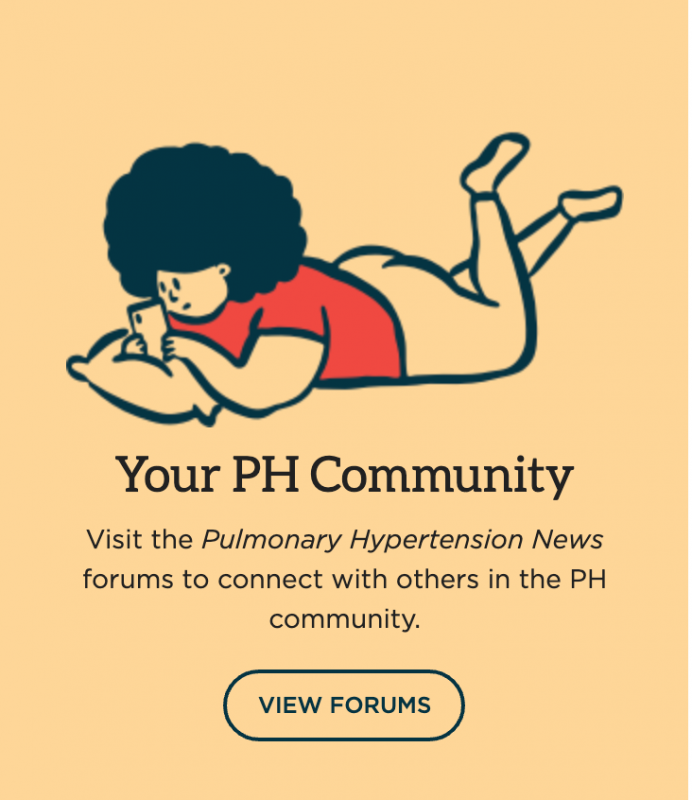Why I think advocacy is important in speeding up a PH diagnosis
A columnist describes her fast, and perhaps uncommon, diagnosis journey

Pulmonary Hypertension News recently shared a graphic on Instagram illustrating the various symptoms of the disease. Next to the outline of a body are the words “Cough and hoarseness,” with a line pointing to the throat area.
This depiction pleased me, because hoarseness was my first indicator of disease back in 1999. However, it wasn’t often discussed as a sign of illness back then.
Throughout much of my 19 years of living with pulmonary hypertension (PH), the most common symptoms that were identified in the community were shortness of breath, dizziness and fainting, and fatigue. It’s surprising, therefore, that my diagnosis followed such a straightforward path. Unlike most other patients, I never presented with any of these common indicators before I was diagnosed.
A matter of two weeks
When I was 3 years old, I had a cold that took a long time to resolve. It eventually morphed into a hoarseness in my voice. My mother took me to my pediatrician, and things unraveled from there.
My mom, who remembers all of this clearly, described how the pediatrician had listened to my heart, left the room, and brought in another doctor to listen, too. After a while, they told my mom that I had a profound heart murmur.
Next, the pediatrician referred me to a cardiologist. A chest X-ray revealed an enlarged heart. Further testing, including an echocardiogram, revealed concerning abnormalities. At that point, my parents were told it could be several things, the worst of them being PH. They hoped it wasn’t.
My mom gave all of the information to my grandpa, who conducted his own research. He reassured my mom that it likely wasn’t PH because I didn’t fit the demographic, and it was incredibly rare in children.
Soon after that, a heart catheterization ruled out all of the other options, leaving PH as the likely diagnosis. From start to finish, this all took place in just two weeks, which is miraculously fast for a rare disease diagnosis. It’s especially noteworthy given that I displayed none of the typical symptoms.
My diagnosis was confirmed a month or two later, when we traveled to see a PH specialist. By then, I was already in an advanced stage of the disease.
Advocacy efforts about the signs and symptoms of PH, like those in the Instagram graphic, are vital. Access to information about rare diseases that can speed up diagnoses can save time and lives.
Looking back, I’m fortunate that my diagnosis journey wasn’t overly complicated. Given my circumstances, it was the best-case scenario. With that said, I know some people are misdiagnosed, and it can take a long time to receive the correct diagnosis and lifesaving treatment. It’s a reminder of why rare disease education and advocacy are crucial to improving the diagnosis narrative. It can make all the difference, even if it’s as simple as an online graphic that highlights something seemingly as benign as a hoarse voice.
Note: Pulmonary Hypertension News is strictly a news and information website about the disease. It does not provide medical advice, diagnosis, or treatment. This content is not intended to be a substitute for professional medical advice, diagnosis, or treatment. Always seek the advice of your physician or other qualified health provider with any questions you may have regarding a medical condition. Never disregard professional medical advice or delay in seeking it because of something you have read on this website. The opinions expressed in this column are not those of Pulmonary Hypertension News or its parent company, Bionews, and are intended to spark discussion about issues pertaining to pulmonary hypertension.









Leave a comment
Fill in the required fields to post. Your email address will not be published.